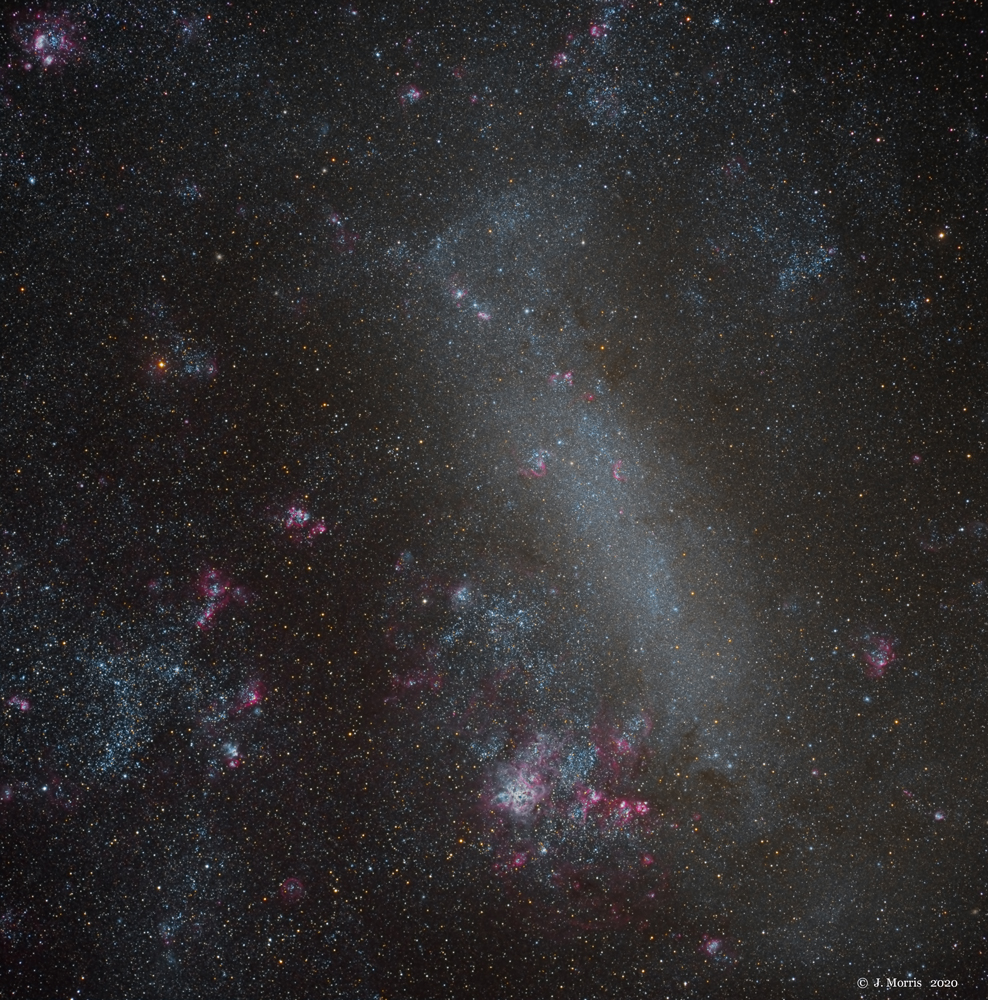
|
From Wikipedia, the free encyclopedia "The Large Magellanic Cloud (LMC) is a satellite galaxy of the Milky Way. At a distance of around 163,000 light-years, the LMC is the second- or third-closest galaxy to the Milky Way, after the Sagittarius Dwarf Spheroidal and the possible dwarf irregular galaxy known as the Canis Major Overdensity. Based on readily visible stars and a mass of approximately 10 billion solar masses, the diameter of the LMC is about 14,000 light-years, making it roughly one one-hundredth as massive as the Milky Way. This makes the LMC the fourth-largest galaxy in the Local Group, after the Andromeda Galaxy (M31), the Milky Way, and the Triangulum Galaxy (M33). The LMC is classified as a Magellanic spiral. It contains a stellar bar that is geometrically off-center, suggesting that it was a barred dwarf spiral galaxy before its spiral arms were disrupted, likely by tidal interactions from the Small Magellanic Cloud (SMC) and the Milky Way's gravity. With a declination of about −70°, the LMC is visible as a faint "cloud" from the southern hemisphere of the Earth and from as far north as 20° N. It straddles the constellations Dorado and Mensa and has an apparent length of about 10° to the naked eye, 20 times the Moon's diameter, from dark sites away from light pollution. The Milky Way and the LMC are predicted to collide in approximately 2.4 billion years."
|
 |
|
Click on Image for Higher Resolution |
|
Date : November, December 2020 Equipment used : Camera -- FLI PL 9000
Acquistion Software : Exposure Detail : SynLRGB combination Total hours 7.625
|
This Web Page was Built with PageBreeze Free HTML Editor